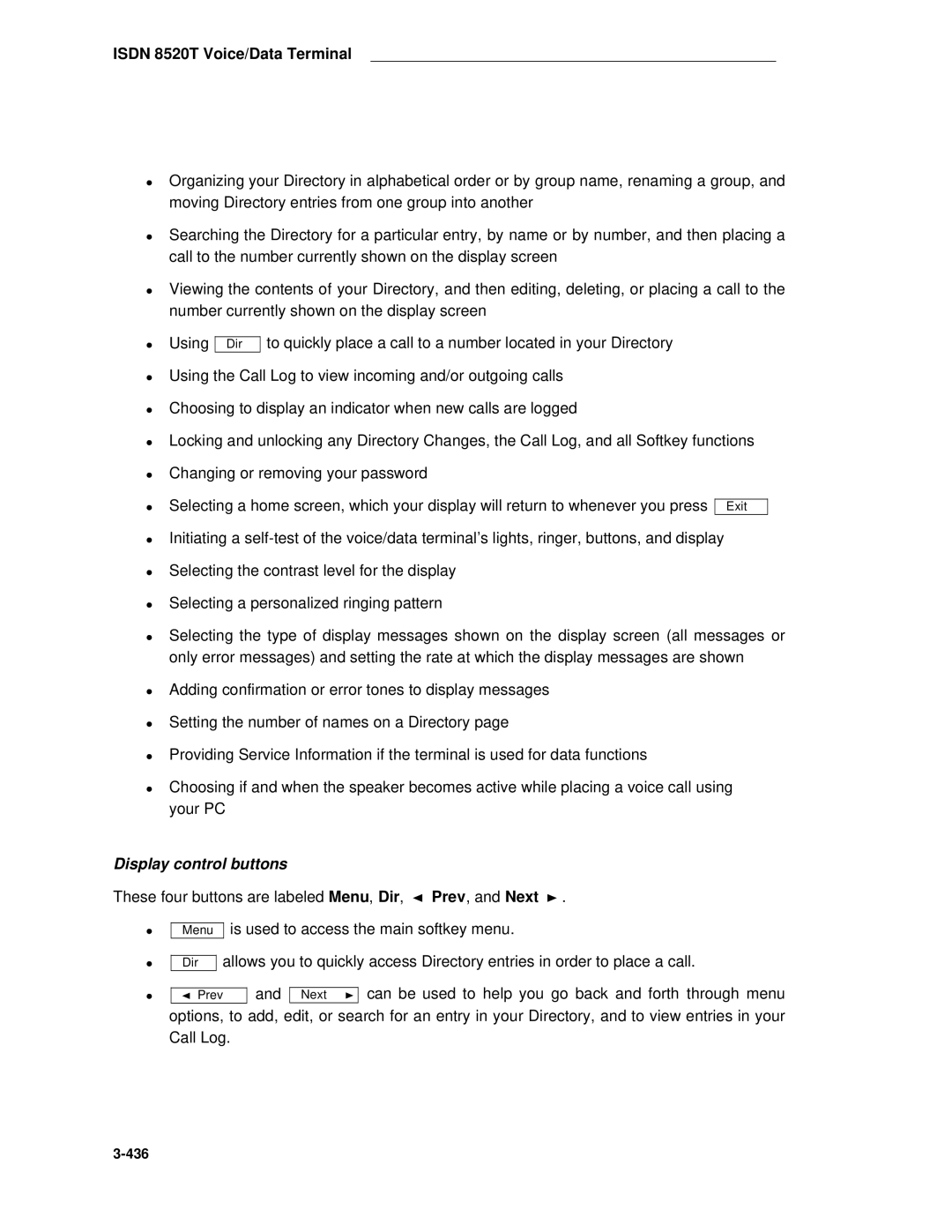ISDN 8520T Voice/Data Terminal
Organizing your Directory in alphabetical order or by group name, renaming a group, and moving Directory entries from one group into another
Searching the Directory for a particular entry, by name or by number, and then placing a call to the number currently shown on the display screen
Viewing the contents of your Directory, and then editing, deleting, or placing a call to the number currently shown on the display screen
Using Dir to quickly place a call to a number located in your Directory
Using the Call Log to view incoming and/or outgoing calls
Choosing to display an indicator when new calls are logged
Locking and unlocking any Directory Changes, the Call Log, and all Softkey functions
Changing or removing your password
Selecting a home screen, which your display will return to whenever you press Exit
Initiating a
Selecting the contrast level for the display
Selecting a personalized ringing pattern
Selecting the type of display messages shown on the display screen (all messages or only error messages) and setting the rate at which the display messages are shown
Adding confirmation or error tones to display messages
Setting the number of names on a Directory page
Providing Service Information if the terminal is used for data functions
Choosing if and when the speaker becomes active while placing a voice call using your PC
Display control buttons
These four buttons are labeled Menu, Dir, ![]() Prev, and Next
Prev, and Next ![]() .
.
Menu is used to access the main softkey menu.
Dir allows you to quickly access Directory entries in order to place a call.
![]() Prev and Next
Prev and Next ![]() can be used to help you go back and forth through menu options, to add, edit, or search for an entry in your Directory, and to view entries in your Call Log.
can be used to help you go back and forth through menu options, to add, edit, or search for an entry in your Directory, and to view entries in your Call Log.
